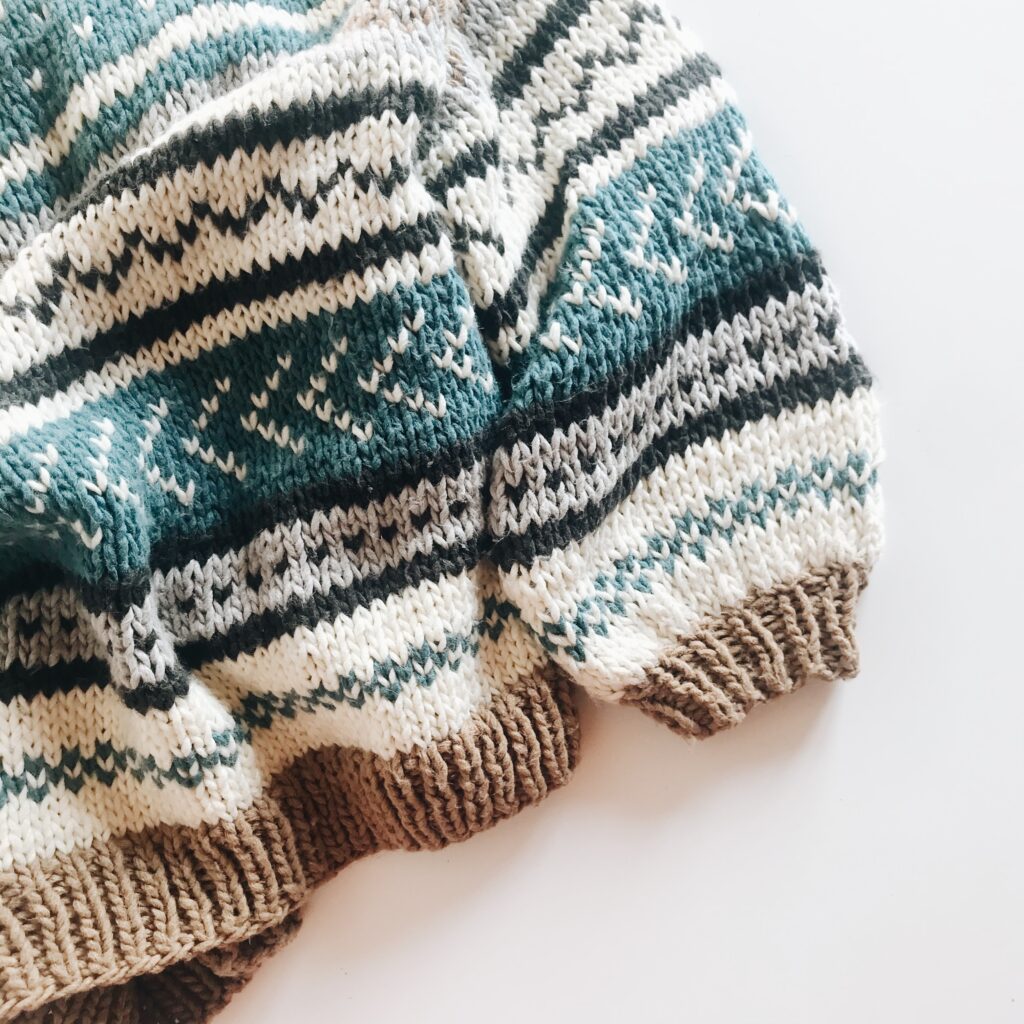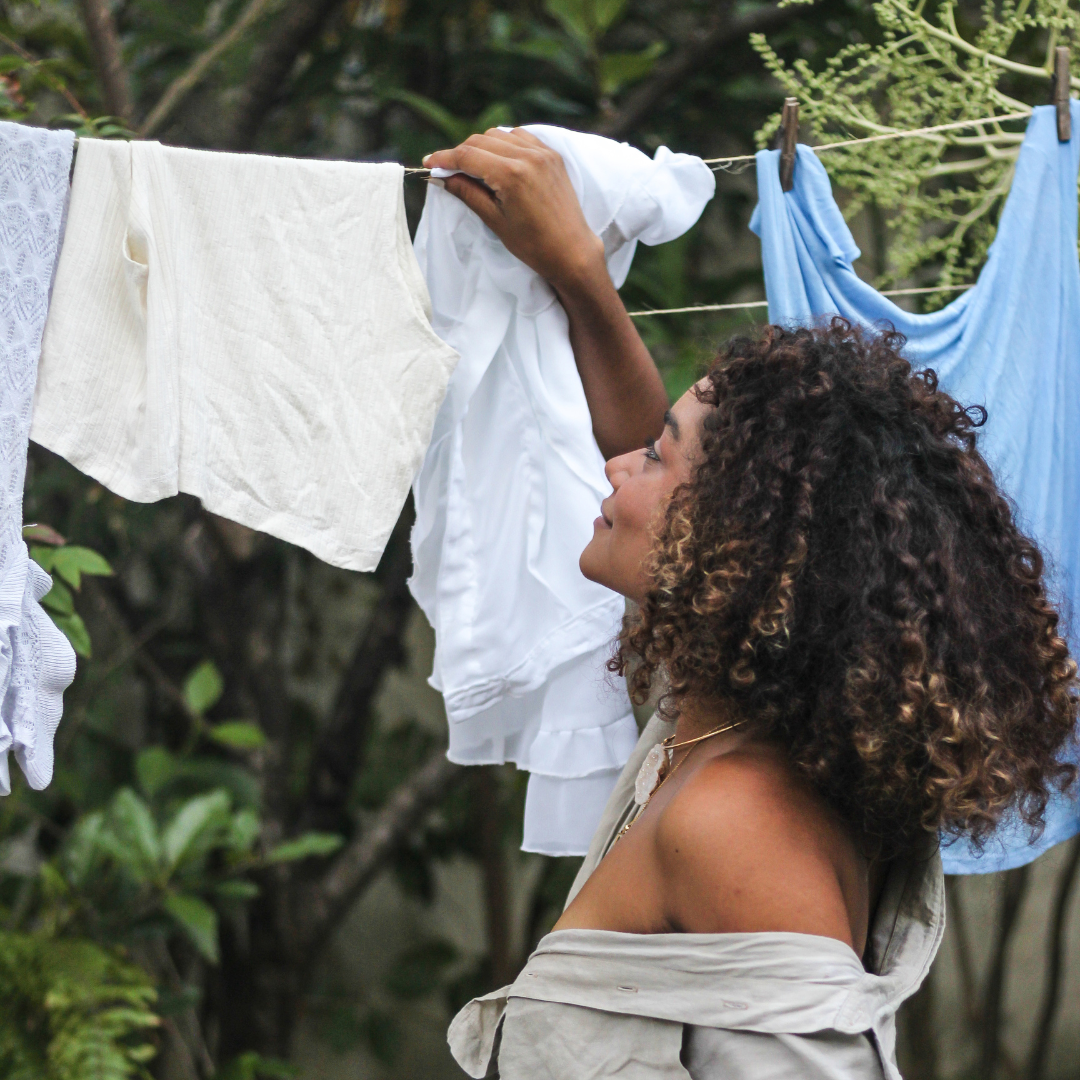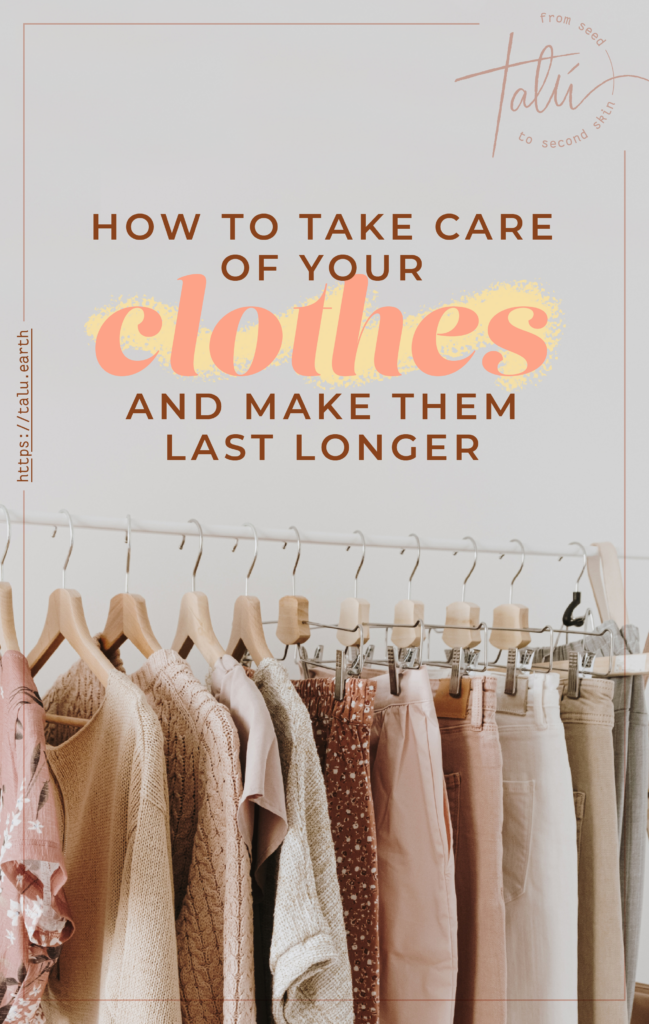Contrary to popular belief, your clothing should be able to last a really long time.
Yes, even some fast fashion. Virtually all clothes can stay in decent shape much longer than fashion brands would have you believe, and learning how to take care of your clothes can keep well-made garments gorgeous for generations.
On average, the life span of clothing (before it falls apart) is around 5 years. Not only that, people throw 85% of their clothing away each year.
That sounds like a ridiculous fake statistic, and I wish it was.
There is, of course, a difference between poorly made clothing and high-quality pieces.
Part of the reason people throw away fast fashion is because it’s built around short-lasting trends in order to get you to buy more, spend more, and then reach for the next new thing!
Another part of this waste is due to clothing falling apart. That’s what I want to address today.
There are a few simple steps that will both save you money and keep your clothing lasting longer, both for fast fashion and especially for well-made, natural fibre clothing.
I’m passionate about all things textiles, natural fibres, and sustainability, so I’m sharing everything I know about how to take care of your clothes in the hopes that it reaches someone else who wants to keep their wardrobe in commission as long as possible. Let’s get started!

Tip #1: Fold your jumpers or hang them a brand new way.
To keep jumpers, especially knit and wool, from stretching out, you should fold them.
But if you’re running out of dresser space, you can also use this neat hanging trick I found on Instagram. It’s easier to watch than read, so I’ll just link the quick video.
Here’s the link to the styledbyscience’s sweater hanging tip I love.

Tip #2: Only wash your textiles when they really need it.
This doesn’t mean stay smelly – if your clothes have deodorant stains, dirt, or are otherwise soiled, that means they do in fact need a wash.
If the clothing in question is wool, just lay it out.
One of the benefits of wool is that if it isn’t stained, you can remove odours by simply laying it to air out away from direct sunlight for a few hours – horizontally, so it doesn’t lose its shape.
You can remove odour by using vodka in a spray bottle.
It sounds funny, but it works!
Put straight vodka into a spray bottle, hang your garments, and give them a good spritz. Once they dry and the vodka evaporates, smells will be neutralised and you’re good to go!

Tip #3: If you do need to wash your textiles, be conservative.
Advertisements and brands have made it the norm to use way more detergents and excess products than is actually recommended.
Use cold water as much as possible.
With modern soaps and detergents, you almost never need to use anything other than cold water. They’re extremely effective! Cold water preserves colours and fibres, uses less energy, and is less expensive.
Use a gentle cycle for anything less than extremely soiled clothing.
One way of taking care of your clothes so that they last longer is washing lightly worn clothing on “gentle” or the corresponding lowest setting.
Friction makes textiles lose colour and wear out faster, and again, modern detergents pull a lot of weight in cleaning power!
Use a small amount of mild, neutral soap or detergent.
Unscented soap is best for your skin and for the planet. There’s fewer additives and chemicals, plus fewer ingredients.
The best laundry detergent is biodegradable and pH balanced! If you live in Ireland, the Palm Free Irish Soap laundry bar can come in handy because it can be used to clean pretty much anything. You can read more about it and other of my favourite Irish Sustainable brands here.
Don’t use more than the recommended amount. Extra detergents or fabric softeners can build up in clothes, creating a film that eventually causes issues.
Use a microplastics bag if washing synthetic fibres.
In this day and age, as much as I wish you could completely avoid synthetic fibres, that often isn’t the case.
Though I’m partial to natural fibres like wool, linen, cotton, and the like, some synthetic fibres have their good qualities. Stretch, moisture wicking, and elasticity are required for some jobs, and I won’t pretend that they’re never useful!
So, given that you may have some synthetic clothing, you can still avoid releasing microplastics into the waterways. Just use a microplastics bag!

Tip #4: Avoid dryers, and hang clothing to dry instead.
Hanging your clothing to dry is better for them than even a no-heat tumble dry.
Make sure to keep everything away from direct sunlight to avoid colour fading. Remember to dry wool garments horizontally so they don’t lose their shape.
These tips for how to take care of your clothes will keep your clothing in tip-top shape for much longer than you’d ever imagine.
Vintage clothing didn’t become vintage by being mistreated – these pieces are high quality and have been cared for impeccably to be handed down for generations.
I love these pieces of history. Learning how to keep clothes clean without sacrificing their structural integrity or colour helps you safeguard a new piece of history with every garment.
Overall: Remember that the more your clothes are exposed to friction and sunlight, the more quickly they’ll start to fade. Take care of them so they last as long as you need them – and even longer if you’re lucky!
If you’re interested in consuming clothing as ethically and mindfully as possible, you might also enjoy my recent blog post about how to build a capsule wardrobe the sustainable way.
And, as always, remember that you can always re-dye your clothes, as well as mend or alter them to give them a brand new life! They say in the end, the most sustainable wardrobe is the one you already have.
Pin this post!
